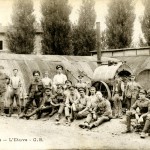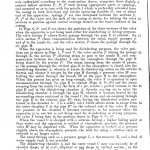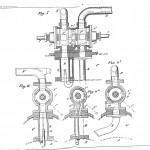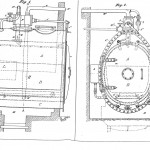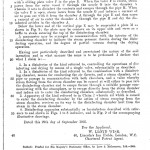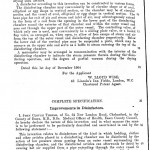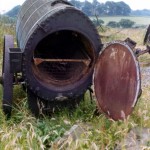In 1904 the Thresh Disinfector Company of 66 Victoria Street, Westminster, London, took out a patent for an improved Disinfector – a device by which low pressure steam was used to disinfect bedding and clothing. Hot air was also created within the appliance. enabling drying of the contents to also take place. These disinfectors, sometimes mounted on wheels (as in the case of the Beamish example), were supplied to the War Office as well as Crown Agents for sale and use across the colonies. They found use with Rural District Councils too – for instance in hospitals – and again these could be static or portable in nature. The London address was presumably an office, as it appears that the actual appliances were made in Keighley, West Yorkshire.
In 1961, the then Bowes Museum director, Frank Atkinson, began a correspondence with a Mr Bell,the Supplies Officer at Bishop Auckland General Hospital. Mr Bell was concerned to save a Thresh Disinfector made by Summersides Ltd of Keighley which remained at the hospital but was in danger of being scrapped. Frank Atkinson referred the matter to the Science Museum. In turn the offer was passed to the Wellcome Historical Medical Museum on Euston Road, London. Their Director, a Mr Underwood, expressed great interest in the Disinfector and in due course made arrangements for its transfer from Co Durham to storage in Dartford.
In 1967 Richmond Borough Council wrote to Frank offering another Thresh Disinfector. The trail goes cold however and it is not known what, if any, action was taken over this offer or what became of the appliance.
In 1970 the Bishop Auckland Disinfector appears once again on the record, with a correspondence beginning in 1970 indicating that it had arrived at Brancepeth Camp, where the collections that would ultimately create Beamish, were being gathered. The letters state that though its arrival was anticipated, its appearance on a given date was not and so d dialogue between Frank Atkinson (by now the founder of Beamish) and British Road Services begins. The Wellcome Historical Medical Museum had found the Disinfector surplus to requirements and so offered it to Frank, recalling his original assistance in saving it in 1961. Frank accepted it for the proposed Open Air Museum (not then Beamish) and it was transferred in 1970.
In the early 1990s it was moved to a training college in Teesside for restoration, returning to store at Beamish, where it remains. It has often been associated with the First World War, but there is no direct evidence of this, though it is true to say it was of a type used by the War Office and, as the postcard in the gallery below shows, very similar examples found their way to France for use by British soldiers.
For now the Disinfector remains in secure store. However, a recent study by the Science Museum of their own Disinfector (obtained from the Isle of Man), prompted further investigation and perhaps a better understanding of our own example. It may yet find a role on display within a suitable display relating to the story of rural district council/health services (pre-NHS).
The gallery below shows the Beamish example (Museum reference 1970-61) both before and after restoration as well as a postcard sent from France in 1918 by a soldier and the relevant patent information from the Thresh Disinfector Company.

